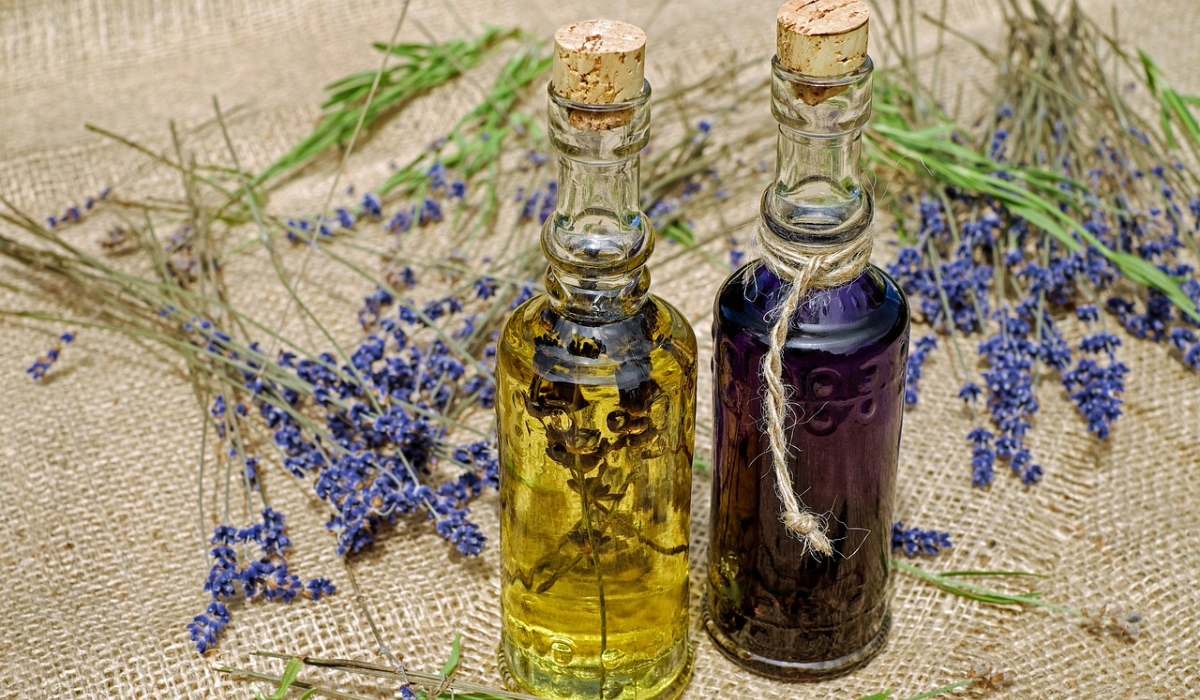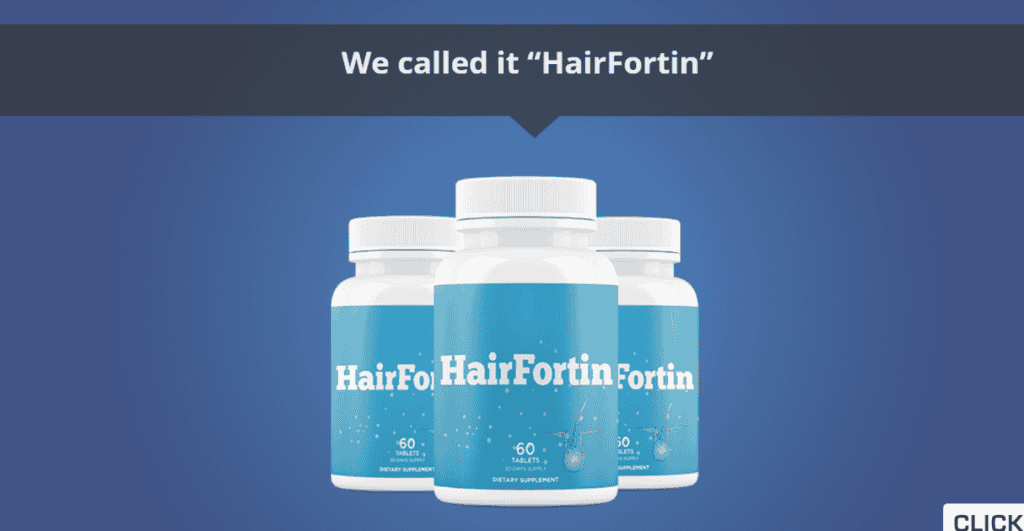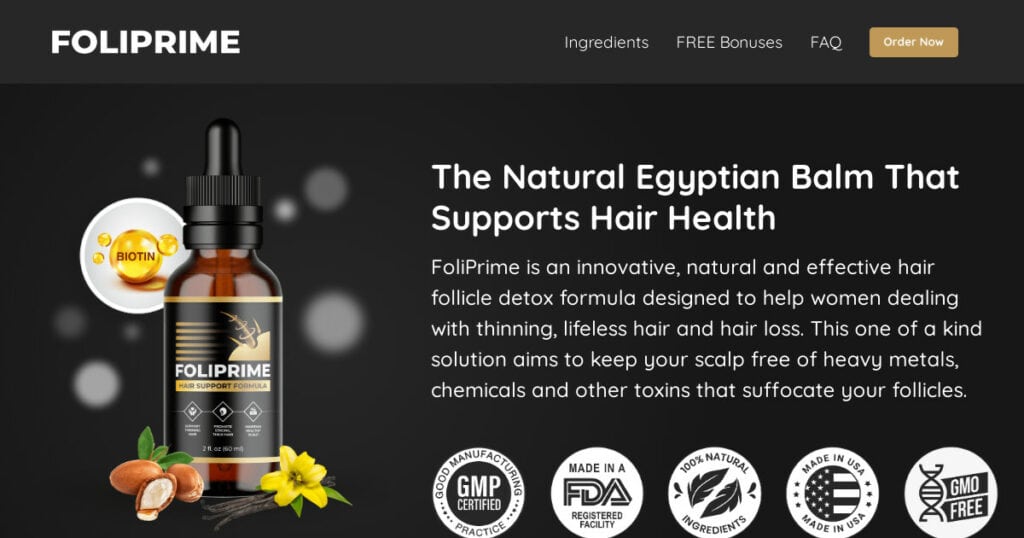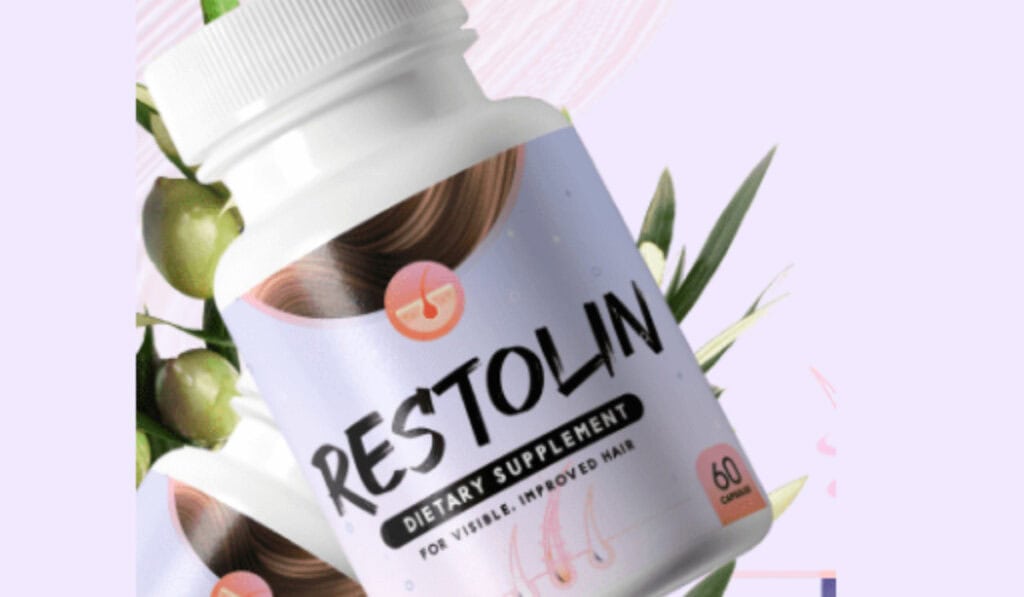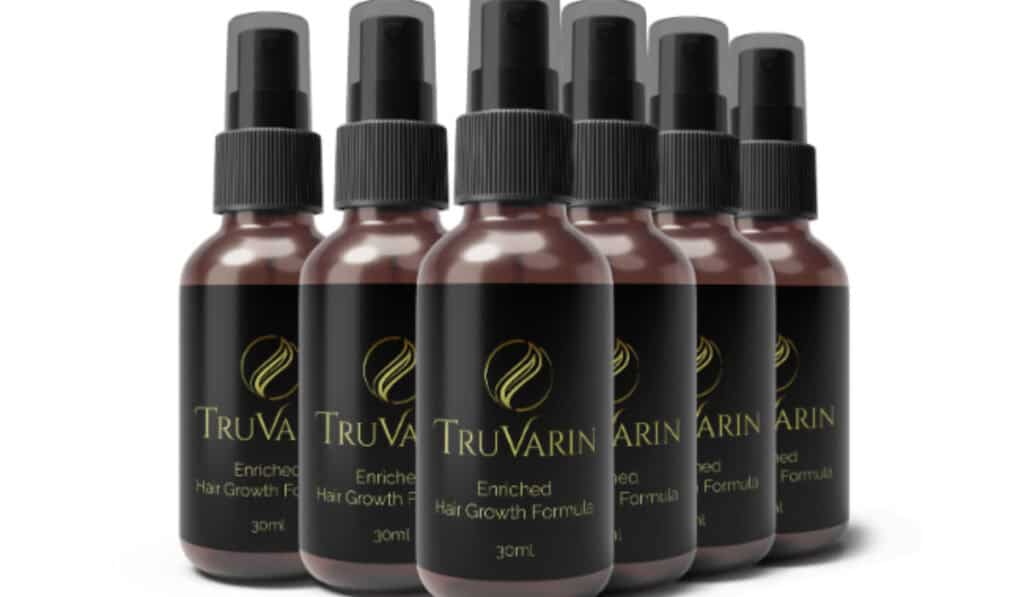A Comprehensive Guide of all Hair Types and Textures
Have you ever wondered if the hair oil you’re using is actually doing anything for your hair health? With so many options on the market, it’s tough to figure out which ones are worth your time and money. This guide will dive deep into the world of hair oils, breaking down the science and myths to reveal which oils truly contribute to healthier hair.
Argan oil and almond oil are stars in the hair care world, known for their essential fatty acids that help keep hair nourished and strong. These oils, among others, are celebrated for promoting healthy growth, offering a natural solution to common hair woes. But it’s not just about slathering your hair in oil; understanding which oil works for your hair type is key.
We’ll explore how incorporating the right hair oils into your routine can transform your hair from the inside out. From the moisture-locking properties of coconut oil to the scalp-stimulating benefits of rosemary oil, get ready to unlock the secrets to luscious, healthy locks.
Understanding Hair Health and The Role of Oils
Healthy hair starts with the right care, and oils play a crucial role in maintaining hair health. Argan oil and almond oil, rich in essential fatty acids, are like superfood for your hair. These oils not only moisturize the hair but also protect it from damage, ensuring your locks remain strong and shiny.
The use of oils in hair care is not just about adding shine; it’s about creating a foundation for healthy growth. By nourishing the scalp and hair strands, oils help to repair damage and prevent future breakage. Integrating these natural wonders into your routine can make a significant difference in the health and appearance of your hair.
The Science Behind Hair Growth
Hair growth is a complex process influenced by various factors, including nutrition, genetics, and proper care. Natural oils such as argan oil, castor oil, and almond oil play a supportive role in this process. These oils can help to reduce split ends and keep your hair hydrated. Jojoba oil is particularly effective in mimicking the scalp’s natural oils, promoting a healthy environment for hair growth.
Massaging the scalp with these oils can stimulate the scalp to encourage healthy growth. This stimulation helps to boost blood circulation, providing the hair follicles with the nutrients they need to produce strong, healthy hair. Including these oils in your hair care regime can be a game-changer for achieving the lush, vibrant hair you desire.
How Oils Contribute to Hair Health
Argan oil, known for its nourishing properties, is a powerhouse when it comes to hair health. It’s packed with antioxidants and vitamins that help to moisturize the scalp and hair strands, reducing dryness and brittleness. This, in turn, can lead to less breakage and a more vibrant, healthy appearance.
But argan oil’s benefits don’t stop there. It also protects the hair from everyday damage caused by environmental factors, styling tools, and chemical treatments. By forming a protective layer around each hair strand, argan oil helps to prevent the loss of moisture, ensuring your hair stays strong and elastic. Regular use of argan oil can transform your hair, giving it a soft, silky texture that’s visibly healthier.
Top Recommended Hair Oils for Enhanced Hair Health
For those seeking to improve their hair health, several oils stand out for their exceptional benefits. Argan oil is celebrated for its ability to moisturize and protect, making it a staple in hair care routines. To stimulate hair growth, massaging the oil into your scalp can boost blood circulation and awaken the stem cells responsible for natural hair growth. Incorporating these recommended oils into your care routine can lead to noticeable improvements in the health and appearance of your hair.
1. Coconut Oil – A Deep Conditioning Powerhouse
Coconut oil is renowned for its deep conditioning properties, thanks to its unique ability to penetrate the hair shaft. Originating from Sri Lanka and South America, this oil is rich in lauric acid, which has a low molecular weight, allowing it to nourish the hair from within. Virgin coconut oil, in particular, is effective in preventing protein loss, a key factor in maintaining the health and appearance of your hair.
Chemical Composition and Benefits
Coconut oil’s magic lies in its high lauric acid content, which closely resembles the hair’s natural oils. This similarity allows coconut oil to penetrate the hair shaft more effectively than other oils, leading to enhanced moisture retention and strength. The ability to prevent protein loss is crucial for maintaining the structural integrity of the hair, reducing breakage and promoting overall health.
Moreover, the molecular weight of lauric acid in coconut oil makes it an exceptional candidate for nourishing and protecting the hair. Regular use of virgin coconut oil can significantly improve the health and appearance of your hair, making it a go-to choice for those looking to revitalize their locks.
2. Argan Oil – Liquid Gold for Your Locks
Argan oil, often referred to as ‘liquid gold,’ is a treasure for hair care, with its rich antioxidant properties and ability to tackle skin infections through topical application. This oil, derived from the kernels of the argan tree, is a powerhouse of nutrients that can transform the health and appearance of your hair.
Chemical Composition and Nourishing Properties
Argan oil is packed with vitamins, minerals, and antioxidants that together provide a rejuvenating effect on hair. Its high content of essential fatty acids, particularly oleic and linoleic acids, helps to moisturize the hair and scalp, preventing dryness and brittleness. These nourishing properties make argan oil an excellent choice for repairing damaged hair and protecting it from future harm.
Furthermore, the topical application of argan oil can soothe the scalp and reduce the risk of skin infections. Its antioxidant properties also protect the hair from environmental damage, such as UV rays and pollution, ensuring your locks remain healthy and vibrant. Regular use of argan oil can lead to softer, shinier, and more manageable hair, making it a must-have in your hair care routine.
3. Castor Oil – For Strength and Lustre
Castor oil is celebrated for its ability to enhance the strength and lustre of hair. Rich in ricinoleic acid, this oil not only promotes hair growth but also provides intense hydration, making it ideal for those struggling with dry or damaged locks.
Chemical Composition and Hair Growth Promotion
The secret behind castor oil’s hair growth promotion lies in its high ricinoleic acid content. This unique fatty acid helps to balance the scalp’s pH, fostering an environment conducive to healthy hair growth. By hydrating the scalp and hair, castor oil prevents breakage and supports the growth of stronger, healthier hair.
In addition to promoting growth, castor oil’s thick consistency helps to lock in moisture, providing long-lasting hydration for the hair and scalp. Its natural antibacterial and antifungal properties also protect against scalp infections, further supporting healthy hair growth. Regular use of castor oil can lead to visibly thicker, shinier, and more resilient hair.
4. Olive Oil – Versatile Moisturizer for Scalp and Hair
Olive oil, enriched with aloe vera, serves as a versatile moisturizer for both the scalp and hair. Its hydrating properties help to combat dryness, leaving your hair soft and lustrous.
Chemical Composition and Hydrating Effects
Olive oil’s effectiveness as a moisturizer can be attributed to its rich content of healthy fats, including oleic acid. These fats penetrate the hair shaft, providing deep hydration and reducing the appearance of frizz. The addition of aloe vera enhances olive oil’s moisturizing effects, soothing the scalp and promoting a healthy hair growth environment.
Moreover, the antioxidant components in olive oil protect the hair from environmental damage, such as pollution and excessive sun exposure. This dual action of hydration and protection makes olive oil an excellent choice for those seeking to improve the health and appearance of their hair. Incorporating olive oil into your hair care routine can lead to softer, shinier, and more manageable locks.
5. Almond Oil – Softness and Shine Enhancer
Almond oil, originating from South America, stands out as a rich source of nutrients, offering protection against UV radiation and helping to mend the gap between cuticle cells. Its lightweight formula ensures your hair remains soft and shiny without feeling weighed down.
Chemical Composition and Hair Strengthening Abilities
Almond oil is packed with essential fatty acids, vitamins, and minerals that collectively strengthen the hair. Its emollient properties help to improve the hair’s texture, reducing breakage and split ends. The oil’s ability to shield the hair from harmful UV radiation further contributes to its protective qualities.
Additionally, almond oil’s unique composition aids in sealing the gap between cuticle cells, preventing moisture loss and enhancing the hair’s natural shine. Regular application of almond oil can significantly improve the softness and manageability of your hair, making it an invaluable addition to your hair care routine.
6. Rosemary Oil – The Growth Stimulant
Rosemary oil has emerged as one of the most promising growth oils, especially for those dealing with androgenic alopecia. Studies have shown it to be as effective as minoxidil, a common hair growth treatment, without the side effects. This makes rosemary oil a natural and powerful option for enhancing hair growth and thickness.
Chemical Composition and Circulation Boosting Effects
Rosemary oil’s effectiveness in promoting hair health can be attributed to its unique chemical composition, which includes compounds that stimulate blood circulation to the scalp. This increased blood flow delivers more nutrients and oxygen to hair follicles, creating an optimal environment for hair growth. Additionally, its anti-inflammatory properties help in soothing the scalp and promoting healthier hair roots.
Moreover, rosemary oil has been found to prevent the conversion of testosterone into dihydrotestosterone (DHT), a hormone responsible for hair loss. This action helps in reducing hair thinning and supports the growth of stronger, thicker hair. Regular use of rosemary oil can significantly improve scalp health and hair quality over time.
7. Amla Oil – Ancient Secret for Hair Health
Amla oil, extracted from the Indian gooseberry, has been a cornerstone in Ayurvedic medicine for centuries, primarily for hair care. Its rich source of vitamin C and a plethora of antioxidants make it an excellent remedy for split ends and hair loss. Regular application of amla oil has been shown to enhance blood circulation to the scalp, revitalizing hair follicles for improved growth and strength.
Chemical Composition and Revitalizing Effects
The efficacy of amla oil for hair health is largely due to its high concentration of vitamin C, minerals, and antioxidants, which combat free radicals and prevent premature greying and hair loss. An international journal published a study that highlighted amla oil’s ability to penetrate the scalp deeply, nourishing the hair from the roots, reducing hair fall, and promoting significant hair growth.
In addition to its hair growth properties, amla oil provides deep conditioning, leaving hair soft and shiny. Its anti-inflammatory and antibacterial properties help maintain a healthy scalp, preventing dandruff and scalp infections. Integrating amla oil into your hair care routine can lead to visibly thicker, healthier hair.
Other Beneficial Oils and Their Unique Properties
Exploring the world of hair oils reveals a diverse range of options beyond the popular choices. Castor oil, rich in ricinoleic acid, is renowned for its hair strengthening and growth-promoting properties. Amla oil, with its high vitamin C content, is an ancient remedy for hair health, revered for its ability to improve blood circulation and reduce premature greying. Sesame oil offers protection against UV radiation, acting as a natural shield for your hair. The unique chemical composition of these oils, including essential nutrients and antioxidants, makes them invaluable for hair care. Incorporating oils like brahmi amla into your regimen can bridge the gap between cuticle damage and lush, healthy hair. Regular topical application of these oils, particularly in regions with high exposure to elements such as Sri Lanka and South America, can yield promising results in combating hair loss, skin infections, and cell damage.
8. Sesame Oil – The Protective Shield
Sesame oil is not just for cooking; it’s a potent ally for your hair. Its natural UV protection properties make it a must-have for anyone looking to shield their locks from the damaging effects of the sun. The rich, nourishing composition of sesame oil also contributes to maintaining scalp health and preventing dryness.
Chemical Composition and UV Protection
The protective qualities of sesame oil against UV radiation can be attributed to its antioxidant-rich profile. These antioxidants prevent the harmful effects of sunlight on the scalp and hair, reducing the risk of hair loss and maintaining hair color integrity. Furthermore, sesame oil is loaded with essential fatty acids that moisturize the scalp and hair, preventing dryness and brittle strands.
Regular application of sesame oil can form a protective layer over the hair, preventing damage from environmental stressors. This natural barrier not only retains moisture but also keeps the scalp nourished, promoting overall hair health. For those looking to protect their hair while keeping it conditioned, sesame oil is an excellent choice.
9. Tea Tree Oil – The Scalp Clarifier
Tea tree oil, recommended by many board-certified dermatologists, is a powerhouse for scalp health. Its oil is rich in antimicrobial properties, making it an ideal choice for treating dry scalp and various skin conditions. By applying it directly to the scalp, you can enjoy a refreshed and clean hair base, free from impurities.
Natural Antiseptic Properties
The antimicrobial properties of tea tree oil make it an effective natural antiseptic for the scalp, capable of combating bacteria and fungus that contribute to dandruff and itchiness. Its ability to penetrate the hair shaft ensures that the scalp is deeply cleansed and soothed. Oils extracted from plants like tea tree provide a gentler alternative to chemical-based scalp treatments, promoting health without stripping away natural oils.
By incorporating tea tree oil into your hair care routine, you can maintain a healthy scalp environment, crucial for hair growth and vitality. Its refreshing scent and cooling sensation also offer a soothing experience during application, making it a popular choice for those looking to treat their scalp issues naturally.
10. Peppermint Oil – The Refreshing Stimulus
Peppermint oil is celebrated for its invigorating effects on the scalp, making it a favorite among hair care enthusiasts. Its cooling sensation stimulates blood flow to the scalp, encouraging hair growth and providing a refreshing experience during use.
Invigorating Scalp and Promoting Circulation
The application of peppermint oil to the scalp can lead to an increase in circulation, a key factor in promoting hair growth and strength. Its refreshing properties not only awaken the senses but also contribute to a healthier scalp environment. Additionally, when combined with aloe vera, peppermint oil’s soothing effects are enhanced, offering relief from scalp irritation and dryness.
Regular use of peppermint oil can also lead to thicker, fuller hair, as its stimulating properties encourage the flow of nutrients to hair follicles. This natural oil proves to be an effective and enjoyable way to boost hair health and promote a vibrant, healthy mane.
How to Properly Apply and Use Hair Oils for Maximum Benefit
Applying hair oils correctly is essential for maximizing their benefits. A 2021 study highlighted the importance of applying oils to both the scalp and hair in a manner that ensures even distribution without over-saturation. Warm the oil slightly before applying to enhance absorption and effectiveness.
Massaging the oil into your scalp with gentle, circular motions can further boost blood circulation, promoting healthier hair growth. The length and ends of your hair also benefit from oil application, helping to prevent dryness and split ends. By following these application techniques, you can make the most out of your hair oil routine.
Techniques for Oil Application
When applying oils like lavender oil, known to boost hair growth, it’s important to consider their thick consistency and chemical structure. These factors influence how well the oil penetrates the scalp and hair. Kerry E, a trichologist and founder of Follicle Fitness, recommends warming the oil slightly and applying it directly to the scalp for optimal absorption.
Bhringraj oil, an ayurvedic herb known for supporting scalp health, should be massaged into the scalp thoroughly to stimulate blood flow and nutrient delivery to the hair follicles. Techniques such as these ensure that the beneficial properties of hair oils are fully utilized, leading to improved hair health and growth.
Frequency and Quantity: Finding Your Perfect Routine
Finding the right frequency and quantity of hair oil application is key to achieving optimal results without weighing down your hair. Start with small amounts of oil and gradually adjust based on your hair’s response. For some, a weekly application may be sufficient, while others might benefit from bi-weekly treatments.
Listen to your hair’s needs and observe how it reacts to different oils and application frequencies. This personalized approach ensures that your hair receives the right level of nourishment and protection, promoting a healthy, luscious mane.
Potential Risks and How to Avoid Them
While natural oils are generally safe for hair care, it’s important to be aware of potential risks such as allergic reactions or scalp sensitivities. To minimize these risks, always conduct a patch test before using a new oil extensively.
Additionally, using oils in excessive quantities can lead to buildup on the scalp and hair, making them appear greasy and heavy. To avoid this, apply oils sparingly and wash thoroughly with a gentle shampoo. By taking these precautions, you can safely enjoy the benefits of hair oils without unwanted side effects.
Understanding Allergic Reactions and Scalp Sensitivities
When you start using hair oils, your scalp might not always react positively. Some oils can cause allergic reactions or make your scalp feel irritated. This is because everyone’s skin and scalp are different. What works well for one person might cause discomfort for another. It’s important to pay attention to how your scalp and skin respond after you apply a hair oil.
If you notice itching, redness, or any form of discomfort, it might be a sign of an allergic reaction or sensitivity to the oil. It’s crucial to stop using the oil immediately and wash your scalp thoroughly. Remember, maintaining your scalp’s health is just as important as taking care of your hair. So, always choose oils that are kind to both your hair and scalp.
The Importance of Patch Testing
Before you fully dive into applying a new hair oil, it’s wise to do a patch test. A patch test involves putting a small amount of oil on a part of your skin, like behind your ear or on your inner arm, and waiting for 24 hours to see if there’s any reaction. This simple step can help you avoid potential allergic reactions and scalp sensitivities.
If after 24 hours, you don’t see or feel any signs of irritation, redness, or discomfort, the oil is likely safe for you to use on your scalp and hair. Patch testing is a quick and easy way to ensure that the hair oil you’re excited to use won’t cause any unwanted reactions. It’s a must-do step for everyone, especially if you have sensitive skin.
Evaluating the Efficacy: Do Hair Oils Really Promote Growth?
Many people turn to hair oils with the hope of promoting hair growth. While some oils are praised for their nourishing properties, the truth is that results can vary. Oils nourish your scalp and hair, creating a healthy environment that may support hair growth. However, they are not a magic solution that works overnight.
Experts like Yates recommend massaging the oil into your scalp to improve blood circulation and potentially promote hair growth. The act of massaging, combined with the nutrients from the oils, can indeed create favorable conditions for hair growth. Yet, it’s essential to have realistic expectations and understand that oils are part of a broader hair care routine.
Analyzing Clinical Evidence and User Testimonials
When looking at clinical evidence, some studies support the idea that certain oils can promote hair growth by nourishing the scalp and hair follicles. User testimonials also offer a wealth of anecdotal evidence, with many people reporting positive changes in their hair’s health and appearance after incorporating oils into their care routine.
However, it’s crucial to approach these testimonials with a critical eye. What works for one person’s hair might not work for another’s. Genetics, hair type, and underlying health conditions all play significant roles in how your hair responds to oils.
Realistic Expectations and Outcomes
While hair oils can offer numerous benefits, including added moisture, strength, and protection against damage, expecting them to perform miracles might lead to disappointment. Healthy hair growth is influenced by various factors, including diet, genetics, and overall health. Oils can complement these elements but not replace them.
Setting realistic expectations means understanding that oils can help improve the condition of your hair and scalp, potentially encouraging healthy hair growth. However, they should be seen as part of a holistic approach to hair care, not a standalone solution. Patience and consistency are key to seeing results.
Ending on a High Note: Embrace the Natural Luster
Integrating hair oils into your routine can significantly enhance your hair’s natural luster. Oils are extracted from plants and are rich in nutrients that penetrate the hair shaft, offering deep nourishment. This can leave your hair looking shiny, feeling soft, and being more manageable.
By choosing the right oils for your hair type and needs, you can unlock the potential for healthier-looking hair. Remember, the goal is not just growth but also to maintain the health and natural beauty of your hair. Embracing the natural luster of your hair with the help of oils can be a rewarding journey.
Integrating Hair Oils into Your Daily Regimen for Long-Term Benefits
Applying hair oil is not just about addressing current hair issues; it’s about preventing future problems. By making hair oils a regular part of your hair care regimen, you can continuously provide your hair with the nourishment it needs. Start with a small amount to see how your hair responds and adjust as necessary.
Whether you’re dealing with dryness, looking to add shine, or wanting to strengthen your hair, there’s an oil that can help. The key is consistency and finding the right oil that works in harmony with your hair’s natural chemistry. Over time, you’ll likely see improvements in texture, strength, and overall hair health.
Celebrating the Diversity of Hair Types and Textures
Hair oils are fantastic because they cater to a wide range of hair types and textures. From preventing split ends to acting as conditioning agents, oils offer something for everyone. They can protect against UV rays, delay premature graying, and offer antibacterial and antifungal benefits. Knowing the chemical properties of different oils can help you choose the best one for your hair’s unique needs.
Whether you’re in the United States or elsewhere, embracing the diversity of hair types and encouraging hair growth through natural means like hair oils is a beautiful way to celebrate individuality. By improving blood flow to the scalp and providing nutrients, oils can promote a healthy growth phase, density, and fullness. Remember, the best hair care is the one that respects and enhances your hair’s natural beauty and health food for your hair is just as important as food for your body.

